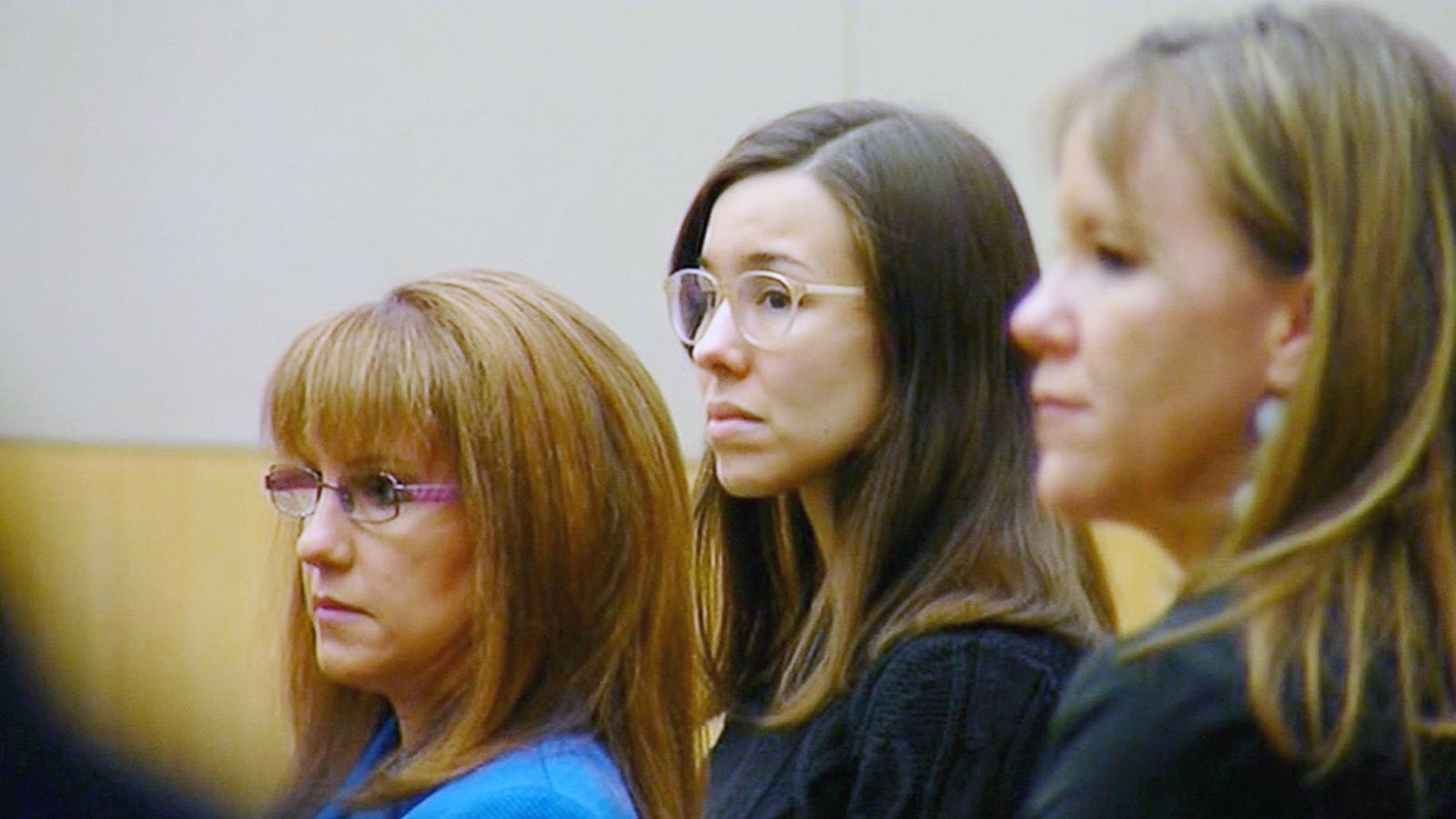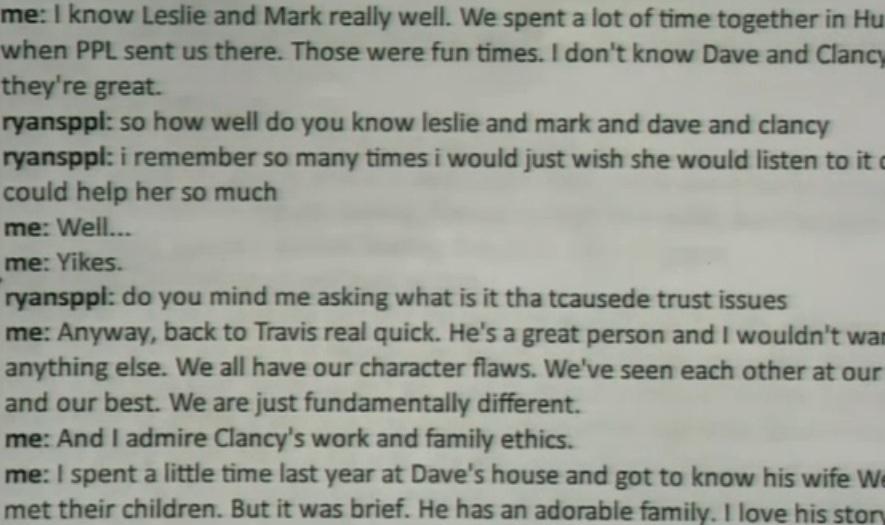The Jodi Arias trial evidence has captured the attention of millions worldwide, turning this legal case into one of the most controversial and widely discussed trials in recent history. From the graphic crime scene photos to the emotional testimonies, every detail of this case has been dissected and analyzed. For those unfamiliar, the Jodi Arias trial revolves around the murder of Travis Alexander, with Arias being the central figure under scrutiny. This case is not just about the crime itself but also about the psychological aspects and relationships that led to it.
The case gained immense media attention due to its dramatic twists and turns, including intense courtroom drama and shocking revelations. The evidence presented during the trial provided a glimpse into the lives of both Jodi Arias and Travis Alexander, raising questions about motive, intent, and the nature of their relationship. The trial's complexity lies in the psychological profiling, forensic evidence, and emotional testimonies that made it a focal point for legal experts and the general public alike.
As we delve deeper into the details of the Jodi Arias trial evidence, it becomes evident why this case remains a topic of interest years after its conclusion. This article aims to provide a detailed overview of the evidence presented, analyze its impact on the trial's outcome, and explore the broader implications for the justice system. Whether you're a legal enthusiast or simply curious about the intricacies of this case, this article will offer valuable insights.
Read also:Unveiling Valerie Benguigui A Comprehensive Guide To Her Life Career And Achievements
Table of Contents
- Biography of Jodi Arias
- Overview of the Crime
- Forensic Evidence
- Psychological Evidence
- Digital Evidence
- Witness Testimony
- Legal Proceedings and Outcomes
- Public Reaction and Media Coverage
- Impact on the Justice System
- Conclusion and Future Implications
Biography of Jodi Arias
Before diving into the evidence, it's essential to understand the background of Jodi Arias. Below is a brief overview of her life leading up to the trial:
Personal Information
| Full Name | Jodi Ann Arias |
|---|---|
| Date of Birth | July 23, 1980 |
| Place of Birth | Salinas, California, USA |
| Occupation | Freelance Photographer and Waitress |
| Education | Attended Arizona State University |
Jodi Arias was born on July 23, 1980, in Salinas, California. She moved to Arizona in her early twenties, where she worked as a freelance photographer and waitress. Her life took a dramatic turn when she became romantically involved with Travis Alexander, a relationship that would eventually lead to one of the most infamous trials in modern history.
Overview of the Crime
The murder of Travis Alexander occurred on June 4, 2008, in Mesa, Arizona. The gruesome nature of the crime scene and the subsequent investigation revealed a complex web of relationships and motives. The prosecution alleged that Jodi Arias stabbed Travis Alexander 27 times, slit his throat, and shot him in the head.
Jodi Arias trial evidence included photographs of the crime scene, forensic reports, and psychological evaluations. These pieces of evidence played a crucial role in shaping the narrative of the trial and influencing the jury's decision.
Forensic Evidence
The forensic evidence in the Jodi Arias trial was extensive and detailed. Key findings included:
- Travis Alexander's body was found in his home's shower with multiple stab wounds and a gunshot wound.
- Forensic analysis revealed that the murder weapon was a knife and a 0.22 caliber pistol.
- Footprints and DNA evidence linked Jodi Arias to the crime scene.
Experts testified about the trajectory of the bullets and the nature of the stab wounds, providing a clear picture of the events leading to Travis's death. The forensic evidence was instrumental in establishing the prosecution's case against Jodi Arias.
Read also:Mt Dew Camacho A Rising Star In The World Of Entertainment
Psychological Evidence
Psychological evaluations of Jodi Arias were a significant aspect of the trial. Experts from both the prosecution and defense presented conflicting opinions on her mental state:
Defense Argument
- Defense psychologists argued that Arias suffered from post-traumatic stress disorder (PTSD) due to alleged domestic abuse by Travis Alexander.
- They claimed that her actions were a result of a dissociative state brought on by the abuse.
Prosecution Argument
- Prosecution experts countered that Arias exhibited signs of a personality disorder, suggesting premeditated actions rather than a reaction to abuse.
- They pointed to her behavior before and after the crime as evidence of deliberate planning.
The psychological evidence added depth to the trial, raising questions about the reliability of mental health evaluations in court proceedings.
Digital Evidence
Digital evidence played a critical role in the Jodi Arias trial. The prosecution presented a wealth of data from:
- Cell phone records showing Jodi Arias's movements on the day of the murder.
- Photographs taken by Arias shortly before and after the crime.
- Emails and text messages exchanged between Arias and Travis Alexander.
This digital footprint corroborated the prosecution's timeline of events and contradicted Arias's initial statements to police. The inclusion of digital evidence highlighted the increasing importance of technology in modern legal investigations.
Witness Testimony
Witness testimony provided additional context to the trial. Key witnesses included:
- Friends and family of Travis Alexander, who described their relationship with him and his interactions with Jodi Arias.
- Law enforcement officers who testified about the crime scene investigation and Arias's behavior during questioning.
- Forensic experts who analyzed the physical evidence.
The testimonies painted a vivid picture of the events leading up to the murder and the immediate aftermath. They also offered insights into the personalities of both Jodi Arias and Travis Alexander.
Legal Proceedings and Outcomes
The legal proceedings of the Jodi Arias trial were fraught with challenges. The trial included:
- A jury selection process that lasted several weeks due to the case's high-profile nature.
- Extensive media coverage, which raised concerns about jury impartiality.
- Multiple appeals and retrials, reflecting the complexities of the case.
Jodi Arias trial evidence ultimately led to a conviction for first-degree murder, though the jury could not reach a unanimous decision on the death penalty. This resulted in a life sentence without the possibility of parole.
Public Reaction and Media Coverage
The Jodi Arias trial generated intense public reaction and media coverage. The case's dramatic elements, including graphic crime scene photos and emotional testimonies, captivated audiences worldwide. Media outlets extensively covered the trial, often sensationalizing certain aspects to attract viewers.
Public opinion was divided, with some sympathizing with Jodi Arias's claims of self-defense and others condemning her actions as premeditated murder. The trial highlighted the influence of media on public perception and the justice system.
Impact on the Justice System
The Jodi Arias trial had a lasting impact on the justice system. Key takeaways include:
- The importance of digital evidence in modern trials.
- Challenges posed by high-profile cases and media influence.
- Questions about the reliability of psychological evaluations in court proceedings.
Legal experts continue to debate the implications of the trial, using it as a case study for future legal reforms and practices.
Conclusion and Future Implications
In conclusion, the Jodi Arias trial evidence presented a complex web of forensic, psychological, and digital information that shaped the trial's outcome. The case remains a significant example of the challenges faced by the justice system in handling high-profile cases. It also underscores the importance of thorough investigations and the need for impartial juries in ensuring fair trials.
We invite you to share your thoughts and insights in the comments section below. For more in-depth analyses of legal cases and their implications, explore our other articles. Stay informed and engaged as we continue to explore the intersection of law, media, and society.


